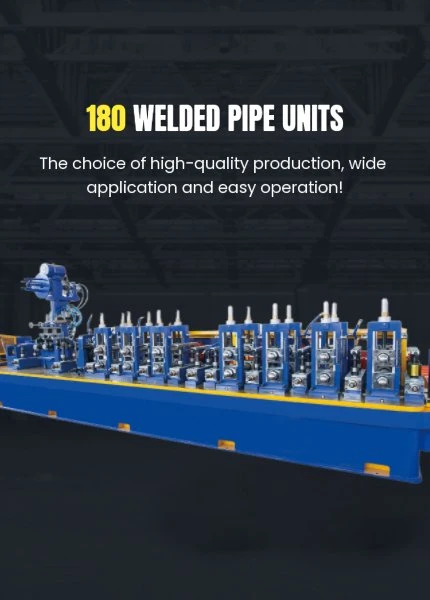Optimizing Efficiency in Pipe Manufacturing Processes and Production Lines
The Pipe Production Line An Overview of Efficiency and Innovation
In the modern manufacturing landscape, the pipe production line stands as a testament to efficiency, precision, and technological advancement. As industries around the globe continue to expand, the demand for high-quality piping solutions is surging. Pipes play a crucial role in various sectors, including oil and gas, construction, plumbing, and telecommunications. In this article, we will delve into the components, processes, and technological innovations that define a typical pipe production line.
Components of the Pipe Production Line
A pipe production line typically comprises several key components that work in harmony to produce high-quality pipes at scale
. These components include1. Raw Material Handling The process begins with the selection and handling of raw materials, which can include metals like steel or polymers like PVC. The quality of these materials is crucial, as they directly affect the durability and performance of the final product.
2. Extrusion Machines For plastic pipes, extrusion machines are employed to melt and form the raw material into the desired shape. The extrusion process involves forcing the molten material through a die, which shapes the pipe. This method is efficient and allows for a continuous production flow.
3. Forming Tools In the case of metal pipes, forming tools such as rollers and welders are used. These tools shape the metal sheets into pipes. Welding techniques, like TIG (Tungsten Inert Gas) and MIG (Metal Inert Gas), are critical in ensuring the joints are strong and leak-proof.
4. Cooling and Sizing Equipment After forming, the pipes must be cooled and sized accurately. Cooling systems, often involving water baths or air cooling, ensure the pipes maintain their shape. Sizing equipment further ensures that each pipe meets the required dimensions and tolerances.
5. Quality Control Systems Quality control is integral to the production line. Automated inspection systems use sensors and cameras to detect any defects in real-time. This not only helps maintain high-quality standards but also reduces waste and improves efficiency.
pipe production line

6. Packaging and Logistics Once production is completed, pipes are packaged for shipment. Automated packing systems streamline this process, and advanced logistics management ensures timely delivery to clients, enhancing overall customer satisfaction.
Technological Innovations
Recent advancements in technology have significantly transformed pipe production lines, making them more efficient and environmentally friendly. Here are some notable innovations
- Automation and Robotics Many production lines now incorporate robotic systems to perform tasks such as welding, cutting, and handling. Automation increases production speed while minimizing human error, resulting in higher consistency and quality.
- Digital Twins The implementation of digital twin technology allows manufacturers to create virtual replicas of their production processes. This technology enables real-time monitoring, predictive maintenance, and process optimization, ultimately reducing costs and downtime.
- Sustainable Practices With growing environmental concerns, many manufacturers are adopting sustainable practices in their production lines. This includes recycling materials, reducing waste, and implementing energy-efficient technologies.
- Smart Manufacturing The integration of IoT (Internet of Things) devices in production lines enables real-time data collection and analysis. Manufacturers can monitor equipment performance, track production metrics, and predict failures before they occur.
Conclusion
The pipe production line is a vital component of modern manufacturing, driven by the need for efficiency, quality, and innovation. As industries evolve, so too will the technologies and practices that underpin these production lines. By embracing advancements in automation, digital technology, and sustainable practices, manufacturers can not only meet the growing demand for pipes but also contribute to a more efficient and environmentally responsible future. The evolution of pipe production lines exemplifies the intersection of engineering ingenuity and industrial growth, reinforcing their significance in various sectors of the economy.
-
High Frequency Straight Seam Welded Pipe Production Line-BzZhou Xinghua Machinery Equipment Manufacturing Co., LTD.|line pipe steel&welded gas pipeNewsJul.30,2025
-
High Frequency Straight Seam Welded Pipe Production Line-BzZhou Xinghua Machinery Equipment Manufacturing Co., LTD.|High Precision&Automated SolutionsNewsJul.30,2025
-
High Frequency Straight Seam Welded Pipe Production Line - BzZhou Xinghua Machinery Equipment Manufacturing Co., Ltd.NewsJul.30,2025
-
High Frequency Straight Seam Welded Pipe Production Line-BzZhou Xinghua Machinery Equipment Manufacturing Co., LTD.|Precision Welding, High EfficiencyNewsJul.30,2025
-
High Frequency Straight Seam Welded Pipe Production Line|BzZhou Xinghua|Precision Welding&EfficiencyNewsJul.30,2025
-
High Frequency Straight Seam Welded Pipe Production Line - BzZhou Xinghua|Precision Engineering&EfficiencyNewsJul.30,2025


